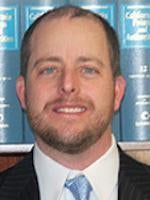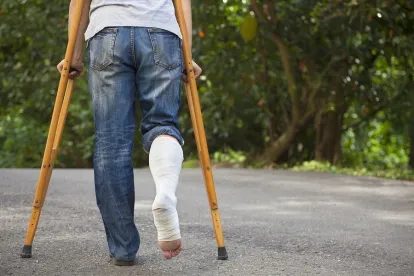Californians are sometimes injured by people who are working at the time of their accidents, including public employees. Both private and public employers may be held to be liable for the actions of their employees in certain situations. A recent case, Jonathan Soto v. City of Long Beach, BC 559317, that was filed in the Los Angeles Superior Court demonstrates the principle of vicarious liability for public employees.
Case background
On Feb. 4, 2014, Jonathan Soto, a 66-year-old man who was retired, fell asleep on the beach close to the 5400 block of Ocean Boulevard around 10 a.m. While he was sleeping, a city employee with the Department of Parks, Recreation and Marine was driving a city truck on the beach, picking up trash as a part of his job. The driver, Stanley Willie Delaney, also had a passenger in his vehicle. Failing to see Soto, Delaney ran over him. Soto was seriously injured and suffered a broken pelvis and fractures to his lumbar vertebrae numbers one through four. Soto filed his lawsuit against the City of Long Beach and against Delaney on Oct. 1, 2014.
Plaintiff’s arguments
Soto argued that Delaney was negligent when he was operating the truck in the course and scope of his employment for the city because he failed to watch out for people on the beach. He also argued that Delaney was driving at an unsafe rate of speed and that he was distracted by the passenger who was with him in the vehicle. In order to prove the extent of his injuries, he called a medical expert, orthopedist Jacob Tauber, M.D., to testify at trial. He claimed special damages for his past accident-related medical expenses in the amount of $253,642 as well as non-economic losses.
Defendant’s arguments
The defendants argued that Soto was negligent for sleeping in an area that he should have known was traveled by trucks. They also disputed the extent of his injuries, arguing that he made a full recovery and had no lasting ill effects. The defendant called their own medical expert, Thomas Schmalzried, M.D., to testify at trial.
Offers and demands
Before trial, the final demand made by the plaintiff was $1,600,000. The defendant countered with a final offer of $640,000, which the plaintiff rejected. The defendant did not make any further offers during the trial.
Verdict
After a trial that lasted for 6 days, the jury deliberated for 1 day, returning a verdict in favor of the plaintiff. He was awarded a total of $2,328,954.50. Of that amount, $253,642 was for his past medical expenses. The remaining $2,075,312.50 was for the non-economic losses that Soto suffered as a result of the accident.
Vicarious liability and public employees
California codifies a public employer’s liability for the tortious actions of its employees at Cal. Govt. Code § 815.2(a). Under that statutory section, a public employer may be liable when an employee’s actions or failures to act are the proximate cause of another person’s injuries if the acts or omissions would have been legal grounds for the injured person to sue the employee separately if he or she had not been working. In the instant case, Delaney’s negligence formed a legal ground upon which Soto would have had the basis to sue him if he had not been working at the time. However, since he was working within the scope and course of his employment when the accident happened, Soto was able to hold the city liable for damages.
The vicarious liability of an employer for the actions of its employees is based on a legal theory called respondeat superior. This is a Latin term that translates as ‘let the master answer.’ In order for the theory to apply, the employee must have been negligent while acting in the course and scope of his or her employment. His or her negligent action must have caused the accident, the accident must have resulted in harm to the plaintiff, and the plaintiff must have suffered actual damages from it.
Course and scope of employment
In order to prove that a worker was acting in the course and scope of his or her employment, the plaintiff must show that the worker was on the clock at the time of the accident, and that the injury resulted from the employee’s performance of an activity for which he or she was employed to perform and that the activity was one that the employer would benefit from in some way.
In this case, Delaney was clearly working at the time of the accident, picking up trash for the City of Long Beach when he ran over Soto, a task which was part of his job. The city clearly benefitted from his removing trash left behind on the beach by beachgoers.
The vicarious liability of a public employer for an employee is codified in order to help people who are injured through the fault of the employee to recover full and fair compensation for their economic and noneconomic losses



 />i
/>i

